The Khalid bin al-Walid Street Rehabilitation Project in Jabal al-Hussein
هذا المقال متوفر أيضاً باللغة العربية
August 2020
Aerial Google Maps view of Jabal al-Hussein with the rehabilitation project area marked in red.
The Greater Amman Municipality (GAM) carried out in 2019 a rehabilitation project for a 650-meter strip of the Khalid bin al-Walid Street in the city’s Jabal al-Hussein district, extending from the Sukaynah bint al-Hussein School to the Firas Intersection (or what is also known as Firas Square because of the roundabout that used to exist there). The project includes the median and sidewalk on each side of this stretch of the street. It is presented as the first phase of an “exemplary neighborhood” project that GAM plans to implement in the area. It aims at facilitating safe pedestrian movement and also prioritizing the rights of pedestrians with visual impairments. In addition, the project aims at improving vehicular traffic flow along the Khalid bin al-Walid Street by creating drop-off / pick offset lanes parallel to it.
This project is one of a number of comparable rehabilitation projects that GAM has carried out over the past twenty years, including those of King Faisal Street, Rainbow Street, Abu Darwish Mosque Public Plaza, al-Wakalat Street, Culture Avenue, al-Khalidi Hospital Street, and King Ghazi Street.*
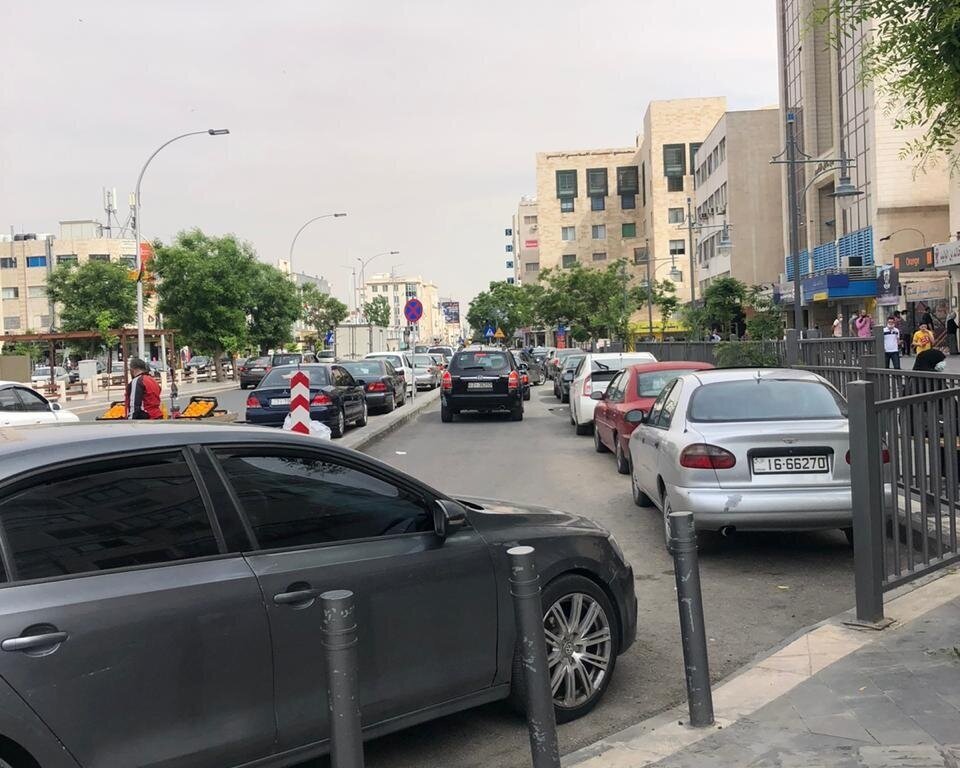
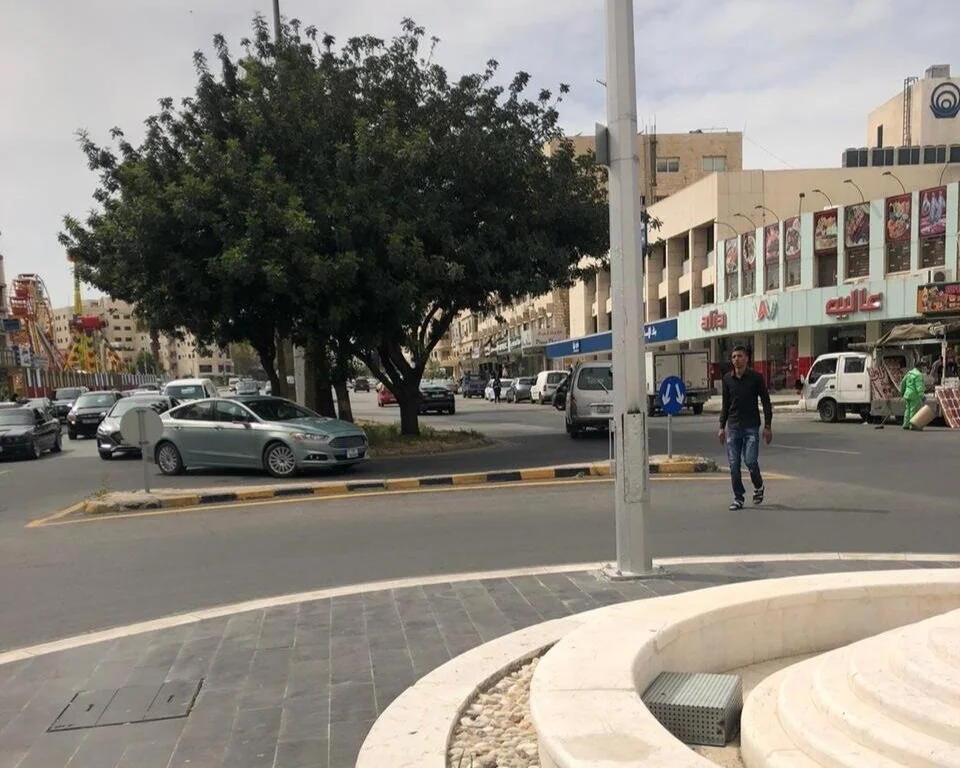

The Khalid bin al-Walid Street is lined by a wide variety of facilities including public service and commercial buildings, clinics, banks, mosques, and schools. It is also marked by heavy pedestrian movement.
The project is the first public space in Jordan to address the needs of the visually impaired. It aims at providing navigational aids for those affected by visual impairments. It accordingly includes tactile navigational strips attached to the relatively smooth basalt paving of the sidewalk. These are made of rubber paving units that feature protruding patterns. They function as guiding tiles that the visually impaired with walking canes can use to assess their surroundings. In addition, obstacles that hinder the movement of pedestrians have been removed, and sidewalk widths have been expanded. This has been achieved by reducing the width of the street median by two meters. Areas of the sidewalk from which pedestrians should not cross the street are fenced off; and ramps have been built to connect the street to the sidewalks, and to connect the sidewalks to the entrances of buildings. In addition, canopies, vegetation, seating areas, and water features have been installed.

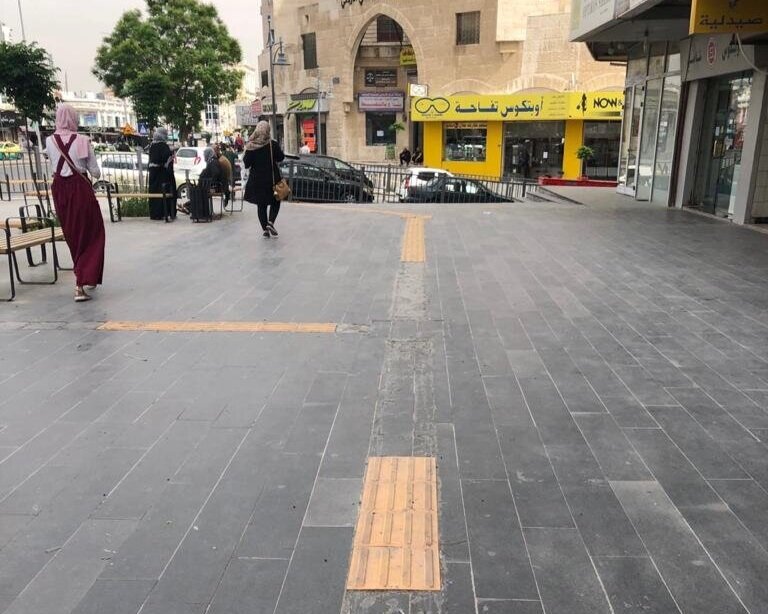
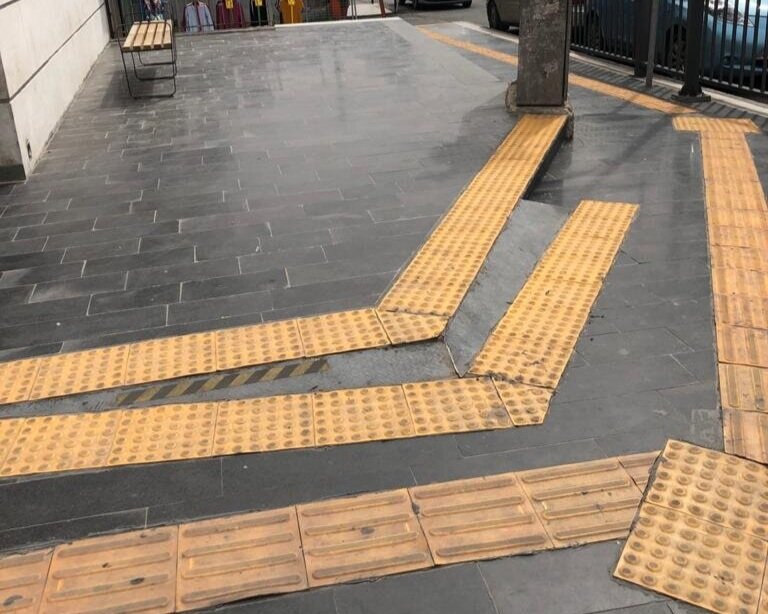
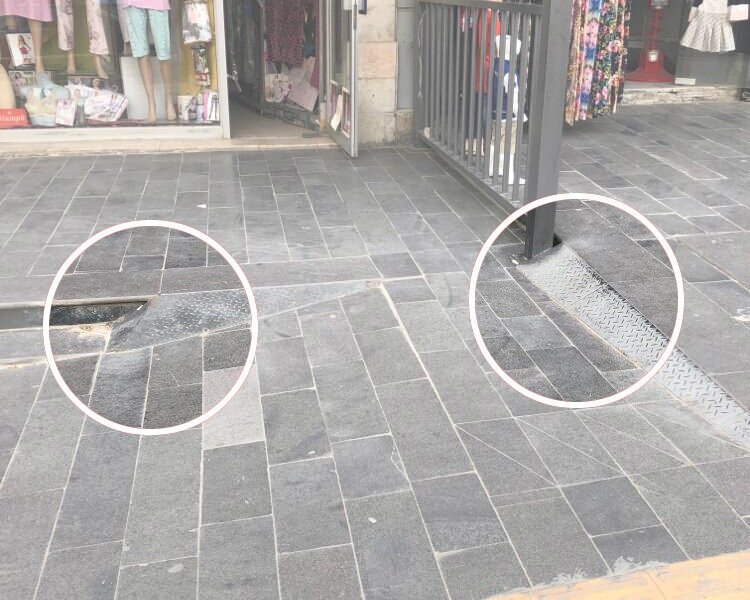
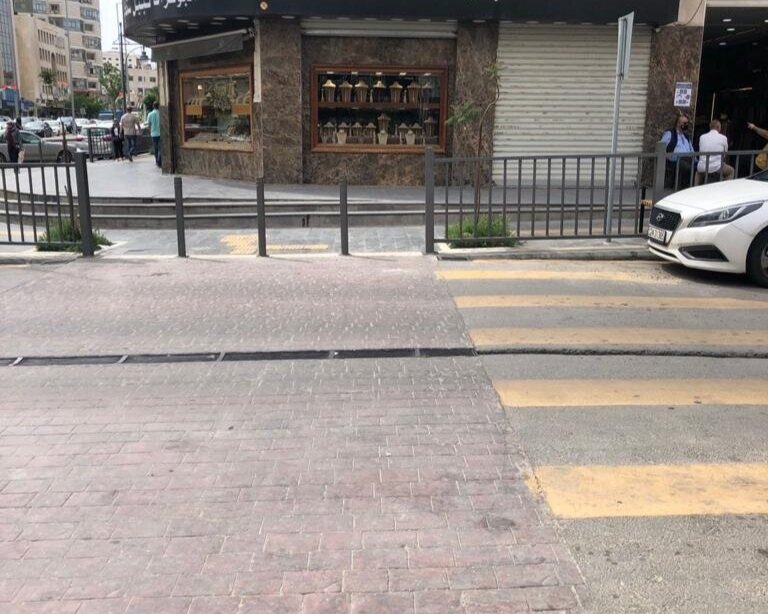
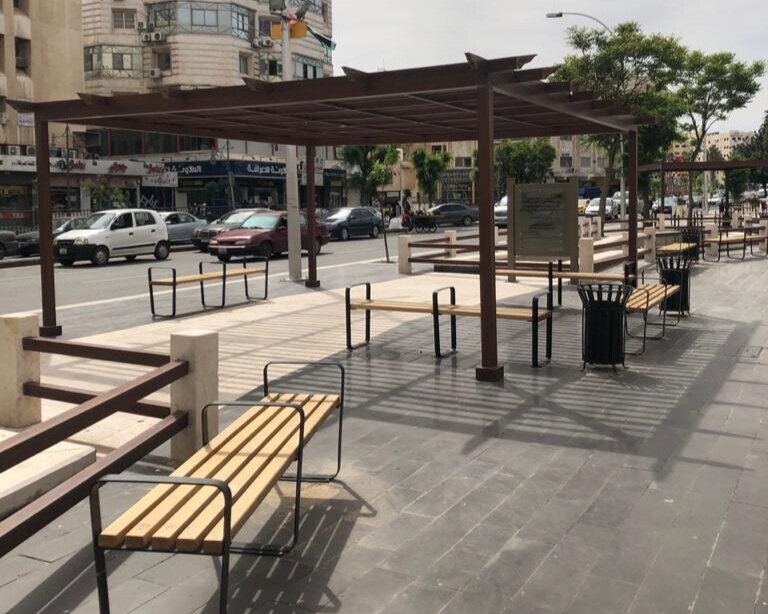
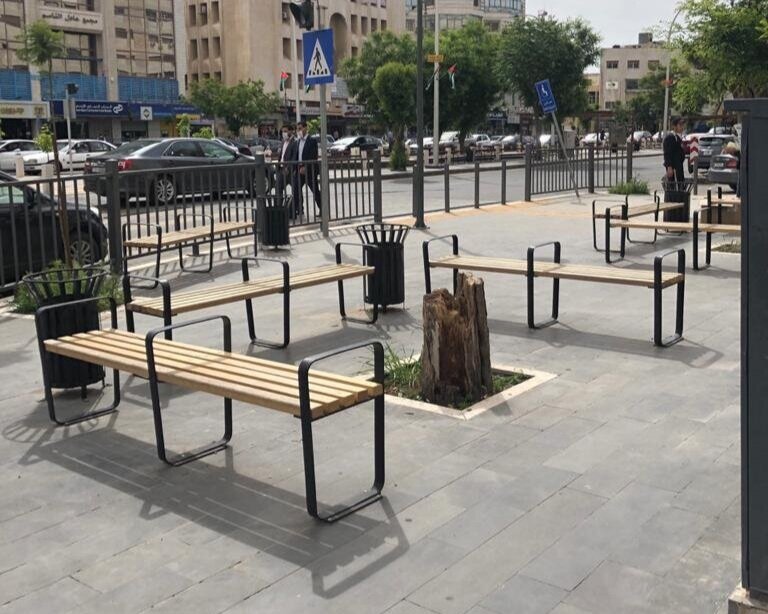
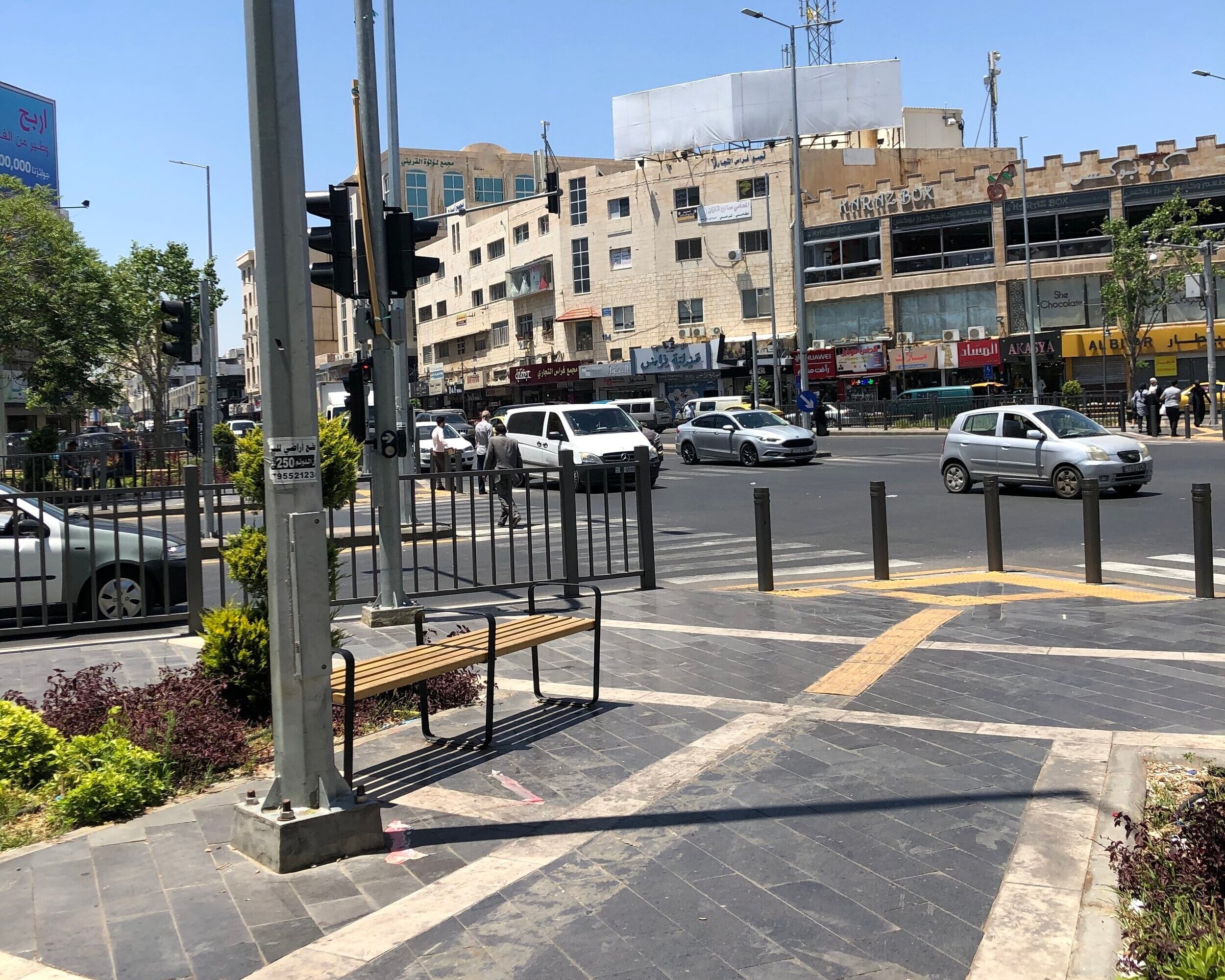
The project is a step forward in terms of improving the pedestrian experience along and across the street. Traffic congestion, however, remains a challenge along the street, partly because parking regulations remain largely unenforced. Moreover, lining the street with trees that provide shade and additional greenery would have been a welcomed addition. Also, the implementation of the project is not carried out consistently along the upgraded stretch of the street. For example, the tactile paving strips for visually impaired pedestrians are only installed along the street’s sidewalks, but not the median.
In fact, these strips for the visually impaired generally have not been properly installed. A good part of them accordingly has come off as a result of improper installation, rendering them unusable (information on the proper installation of such strips is available at https://www.pavingexpert.com/tactile02b). In addition, the project in general is already suffering from a lack of maintenance and supervision even though it was inaugurated in November 2019. i.e. less than a year ago.
We also noted during one of our visits that unauthorized sidewalk vendors had taken over a significant part of the sidewalk, leaving little space for the movement of pedestrians. The presence of such vendors on this street is an enduring problem.
In the final result, a promising urban intervention is unfortunately still far from realizing its full potentials.
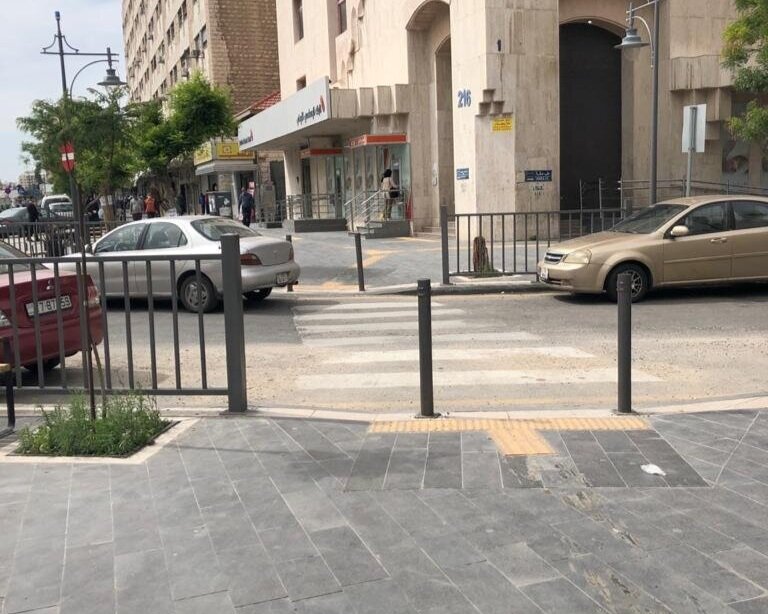
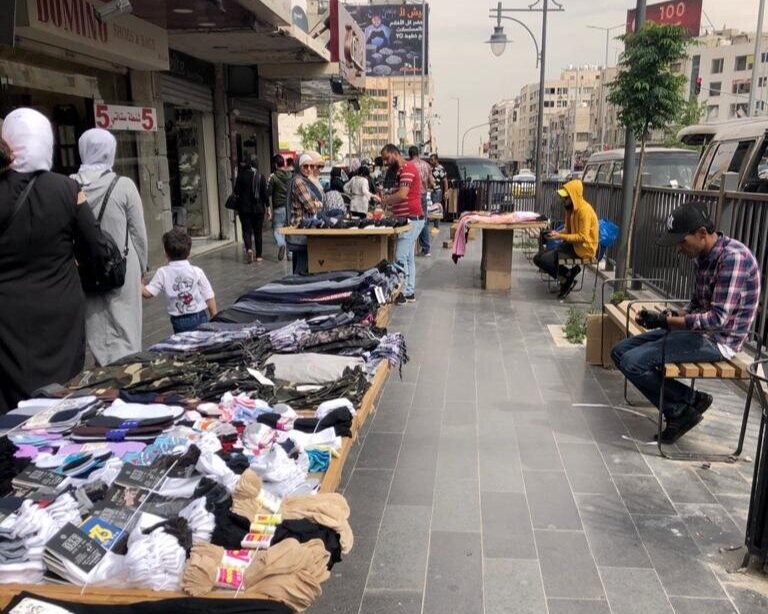
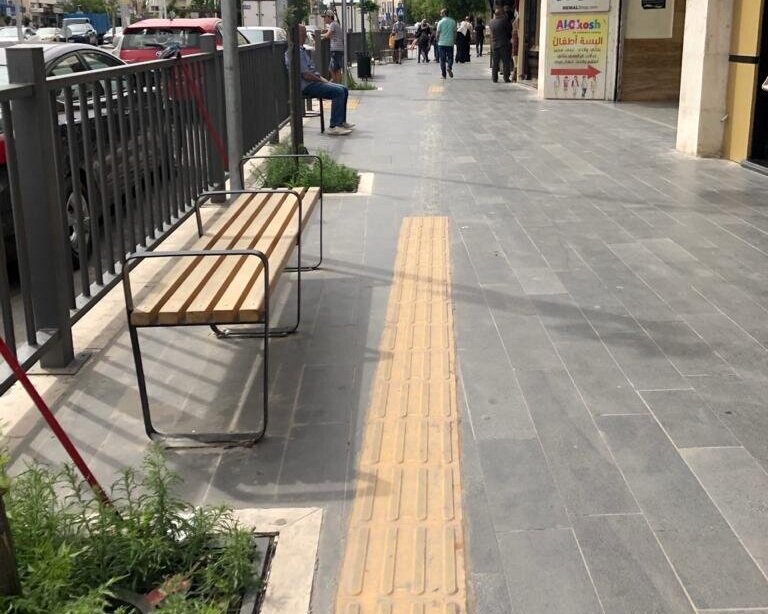
* For additional information on these projects, check the following links in the CSBE website:
- https://www.csbe.org/preserving-ammans-heart-and-soul
- https://www.csbe.org/abu-darweesh-mosque-and-public-plaza
- https://www.csbe.org/wakalat-street-again
- https://www.csbe.org/alkhalidi-streetrehabilitation-project
- https://www.csbe.org/king-ghazi-street-rehabilitation-project
- https://www.csbe.org/exploring-public-space-through-users-behaviour
Additional sources:
“Inaugurating the first phase of the Exemplary Neighborhood in Jabal al-Hussein.” Al-Mamlakah. 9/11/2019. (in Arabic)

